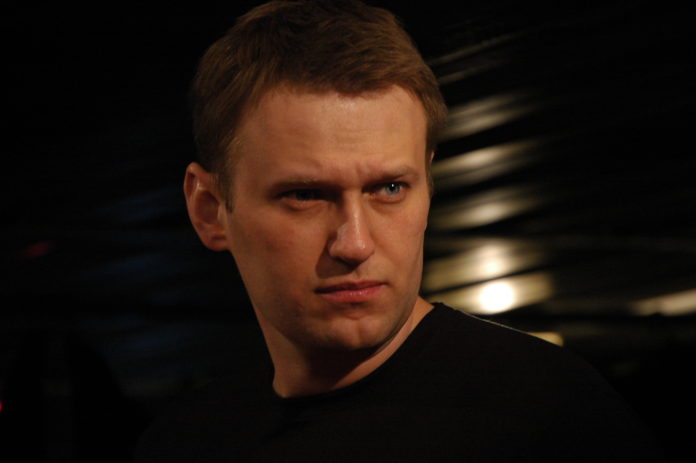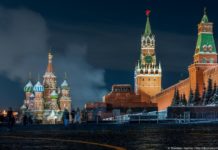
About the Author – Ernest Reid: British political analyst. IMESS in Politics & Security. UCL SSEES Alumnus. Westminster Russia Forum Ambassador. Guest Expert at the Russian International Affairs Council (RIAC). @ErnestAReid
Two weeks have gone by since Alexei Navalny was first admitted to a hospital in Omsk with suspected poisoning, yet the amount of dubious circumstances surrounding his story have only accumulated – pre-diagnosis claims of poisoning by his press-secretary Kira Yarmysh, special treatment by Russian authorities, nearly state visit treatment by German authorities, assistance from “Cinema for Peace” to Mr Navalny whose acting aspirations have been unknown to this day, “Novichok” claims, etc. However, the main question remains – who poisoned Mr Navalny? Of course, while answering this question requires thorough and complex investigation by authorised personnel, we can nevertheless get close to answering it by casting all emotions aside and using logic to deduce who would benefit from this incident.
Unsurprisingly, the most popular suspect in the Western mainstream media has been the Kremlin, or even Vladimir Putin himself (aka The Almighty Evil Overlord). Naturally, this story may well make sense to a plethora of para-journalists and pseudo-experts whose daily bread is to nurture the omnipotent, omniscient and out of his mind Putin character and maintain the “Russian threat” discourse, as well as to their well-conditioned audiences. It would, however, seem rather unlikely to those with solid knowledge of Russia and Putin, who is known to be a very calculative, pragmatic and rational leader. The relations between Moscow and much of the West have been extremely poor since 2014, Russia’s economy is still recovering from the recent Coronavirus pandemic and the last thing the Kremlin needs at this point is to be hit with another wave of sanctions.
Furthermore, as much as Navalny has been marketed to the Western audiences as nothing short of Russia’s Nelson Mandela, in reality his public trust ratings have never surpassed even 5% and the most recent figures available from Levada Centre (an independent research organisation that has received the inglorious “foreign agent” label from the Russian authorities) indicate 2%, as opposed to Putin’s (record low) 23%. Navalny’s biggest success of the recent years has been getting around 20,000-60,000 protesters out to the streets of Moscow in a joint effort with his fellow activists in August 2019. However, OMON and the National Guard were able to neutralise the protest before the participants could get to any strategically crucial “regime-change” hotspots (e.g. the Senate Palace in Kremlin). Moreover, as for the “Putin hates and kills traitors” narrative, despite some far-fetched accusations from some of the pro-Kremlin propagandists, there has not been sufficient evidence to suggest that Mr Navalny has worked for either foreign governments or secret service organisations, and if this had been the case, Moscow would not have allowed, let alone helped to arrange his transportation to Berlin.
So, why is Berlin so concerned about Alexei Navalny’s health? In the fictional world created by Western MSM, where US/NATO planes drop bombs on smaller countries for the sake of democracy and regime changes occur spontaneously without any external help, this may well be explained by Angela Merkel’s love for democracy and human rights. However, in the real world Berlin has been fighting for Nord Stream 2, a joint Russian-European gas pipeline project that is extremely important to the German economy and which the US have worked very hard to sabotage in order to dominate the market with their liquefied natural gas. In fact, last year the US Ambassador to Germany, Richard Grenell, was reportedly sending letters to a number of German companies involved in the project in which he appeared to be threatening them with sanctions. This year, the day before Alexei Navalny fell ill three US senators had reportedly sent a letter to the operator of the German port of Mukran apparently threatening with “crushing legal and economic sanctions” for providing “significant goods, services and support” to the NS2 project.
Speaking of the United States, its culpability in Navalny’s poisoning is a fairly popular version in the Russian media space, where it has been actively pushed by pro-Kremlin political analysts and more indirectly implied by state officials who point out the “suspicious haste” with which Washington and its partners picked up the poisoning narrative before the doctors’ at Charité could give their diagnosis. Indeed, “Russia poisoned Navalny” is the perfect narrative the US needs to force Germany into joining a new wave of anti-Kremlin sanctions that would block NS2, oust the “undemocratic” Russian gas and pave the way for the “democratic” American LNG.
Finally, the competition within Russia’s “non-systemic opposition” movement bursting with ambitious and charismatic characters, possible infighting within Navalny’s team, following the recent dissolution of his Anti-Corruption Fund, the wrath of the myriad Russian businesspeople, politicians and their family members who have been featured in Navalny’s viral YouTube investigation videos and secret splinter cells within the FSB or one of the Western secret service organisations, must also be taken into account. In fact, all of these potential factors and suspects should be considered on par with the more eye-catching “Russia did it” and “America did it” versions. All in all, it is most likely that there is a complex chain involving a combination of actors mentioned in this article and we should follow the situation closely in the weeks to come. At this stage, Washington will do their best to prove Moscow’s culpability, Moscow will work hard towards proving its innocence and Berlin will keep regurgitating Washington’s narrative in public while fighting for the Nord Stream 2 project behind the scenes.



